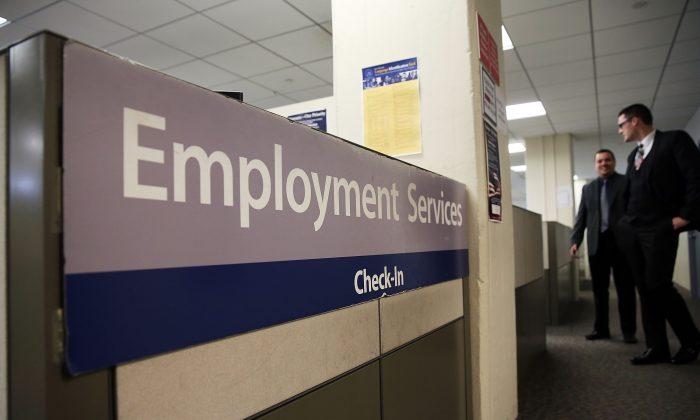Jobless claims filed in the United States soared to a record high for the week of March 15 to March 21, according to new figures released by the Department of Labor, as CCP virus-related lockdowns and closures drive deep layoffs.
This is a historic high, amounting to nearly 12 times as many as the previous week and more than tripling the previous record of 695,000, set in 1982.
The Department of Labor wrote that the increase in jobless claims for the week ending on March 21 is due to the impact of the CCP virus pandemic.
“Nearly every state providing comments cited the COVID-19 virus impacts. States continued to cite services industries broadly, particularly accommodation and food services,” said the Labor Department.
“Additional industries heavily cited for the increases included the health care and social assistance, arts, entertainment and recreation, transportation and warehousing, and manufacturing industries.”
The previous week’s level was revised up by 1,000 to 282,000 from 281,000, the figures show. Also, the four-week moving average was 998,250, an increase of 765,750 from the previous week’s revised average. The previous week’s average was revised up by 250 to 232,500 from 232,250.

Earlier forecasts in a Reuters poll ranged from 250,000 to 4 million unemployment claims.
“In less than two weeks, we have moved from full employment to a number of job destruction we have never experienced in a period of peace,” wrote Christopher Dembik, head of macro analysis at Saxo Bank.
Share markets across the world fell on March 26 as nerves over jobs data outweighed a $2 trillion U.S. stimulus package.
The U.S. Senate on March 25 backed the massive bill aimed to help jobless workers and industries reeling from the disruption caused by the outbreak, with the package heading for the House of Representatives for a vote on March 27.
Think Tank Estimates 14 Million Jobs Lost by Summer
Meanwhile, a Washington-based think tank has made a dire forecast of 14 million jobs lost by summertime.“Our best guess at this point is that the national economy could lose 14 million jobs by summer 2020,” wrote The Economic Policy Institute (EPI) in a note that blamed the viral outbreak for the dismal figures.
The 14 million forecast is an upwards revision over figures it published last week.
“Sadly, our predictions were likely too optimistic,” the think tank stated. The EPI noted that job loss estimates are “rapidly evolving, with new forecasts from different macroeconomic analysts being released on an almost daily basis.”
EPI broke down its unemployment estimates by state. Percentage-wise, Nevada is projected to lose 14.2 percent of total private-sector employment. The state’s leisure, hospitality, and retail sectors account for more than 40 percent of all private-sector jobs.
By absolute numbers of jobs lost, California is projected to have the most, with more than 1.6 million. As a share of total private-sector employment, this number translates to 10.9 percent.
The think tank called for “at least $2.1 trillion in federal stimulus through 2020 to restore the country to reasonable economic health.”
The $2 trillion economic relief package includes one-off payments to individuals, increased benefits for the unemployed and aid to companies, including loans and debt relief to small businesses, plus assistance to states and local governments.
The United States also opened the taps for short-term dollar funding as the Federal Reserve swapped dollars for foreign currencies with other major central banks.





